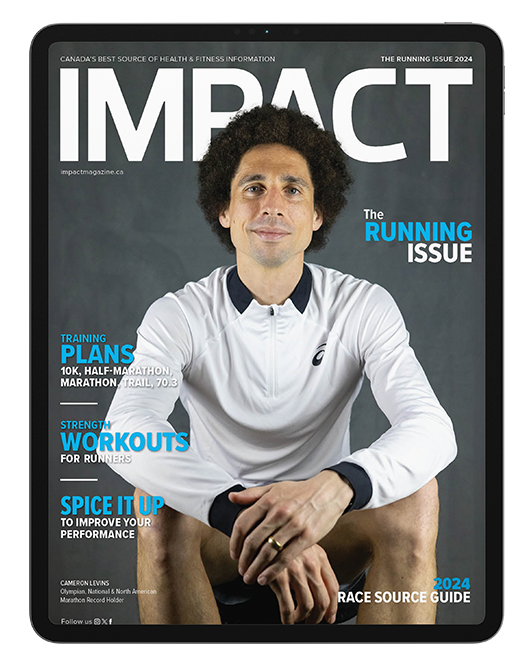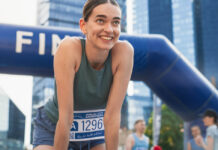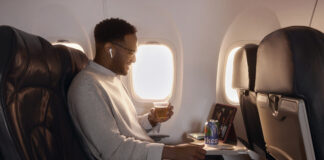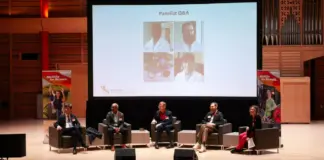Physical activity is a vital component of attaining optimal health, particularly with respect to the condition of the skeletal system. Running in particular has gained widespread recognition as a highly effective means of enhancing cardiovascular fitness, muscular strength, and bone health. The interplay between running and bone mineral density (BMD) is intricate, and this dynamic form of exercise confers copious benefits upon the skeletal system.
Understanding Bone Mineral Density
Osteoporosis is a condition typified by insufficient BMD, which is the quantity of minerals, primarily calcium and phosphorus, present per unit of volume in the bones. These minerals form hydroxyapatite crystals, which contribute to the bone’s rigidity and strength. BMD is a critical determinant of the risk of fractures, and thus, it plays an indispensable role in the appraisal of skeletal health. The bones are perpetually remodelled by osteoblasts and osteoclasts, which build and resorb bone tissue, respectively. It is integral to maintain a dynamic balance in bone remodelling for optimal bone condition. According to a University of Missouri study (2009) regular physical activity, such as running, has been shown to boost BMD by stimulating bone remodelling and proliferating mineralized bone tissue.
Running is known to exert recurring mechanical forces on the bones, which subsequently stimulates bone adaptation. It is believed that the application of external pressure on the bone elicits an internal piezoelectricity that stimulates osteoblasts and fosters new bone formation. Running subjects the body to significant force, often exponentially greater than the body weight, when landing. When the foot contacts the ground, a momentary impact force is transmitted through the skeletal system, activating osteocytes, or bone cells. This mechanical loading, characterized by cyclic compressive and tensile forces, potentiates a positive response in bone formation, catalyzing a rise in BMD.
Weight-Bearing Exercise
Running is an exercise that engages the musculoskeletal system in counteracting the force of gravity. Weight-bearing physical activities are renowned for their beneficial impact on bone health, as they encourage bone development and preservation. Bone, commensurate to muscle, is a highly compliant tissue that responds to the mechanical and metabolic pressures placed upon it. A recent study (Kutac et al., 2024) showed that because of the recurring loading and unloading movements sustained in running, a biomechanical environment is established that fosters bone density, notably in the weight-bearing bones of the lower body.
Running not only has a direct ramification on BMD, but it also influences bone integrity indirectly through hormonal regulation. The hormonal control of bone remodelling in response to running involves a complex interaction of endocrine factors such as parathyroid hormone, thyroxine, growth hormone, vitamin D, estrogen, and glucocorticoids, as well as systemic and local factors that modulate the bone remodelling process. This hormonal interplay illustrates the intricate regulatory mechanisms that govern bone remodelling and emphasizes the systemic and local influences of hormones on skeletal health.
Bone tissue is generally categorized into two types: cortical and trabecular. These two types of bone exhibit distinct responses to mechanical stimuli. Cortical bone, which is present in the outer layer of long bones, adapts to running by increasing its density, thereby providing enhanced structural support. In contrast, trabecular bone, which is situated at the ends of long bones and within vertebrae, responds to running by amplifying its microarchitecture, thereby bettering its capacity to tolerate compressive forces.
A frequent phenomenon in individuals as they age is a curtailment in bone density, which may instigate conditions such as osteoporosis and a heightened risk of fractures. Running may effectively offset this age-related bone loss. Through consistent running, one may uphold BMD, thereby diminishing the fallout of osteoporosis and the probability of fractures in elderly individuals.
Nutrition and Injuries
Running provides a powerful stimulus for bone adaptation, and nutritional factors complement it by inducing optimal bone health (Kohrt, Bloomfield, & Little, 2004). It is vital for runners to consume adequate calories including satisfactory amounts of calcium, vitamin D, and other micronutrients to abet bone mineralization. A well-balanced diet is compulsory to fulfill the greater demands on bone health resulting from habitual physical activity.
While the merits of running for BMD are evident, it is crucial to strike a balance and avoid overtraining, which may give rise to injuries and counterproductive effects on bone status. If the body does not have sufficient time to recover between running sessions, overuse injuries, such as stress fractures, may transpire. A well-structured training program, including rest days, cross-training, and sensible nutrition, is imperative to optimize bone health while minimizing the risk of injury. The skeletal system experiences mechanical and metabolic adaptations from running provided the applied load does not surpass a certain threshold that may impair the bone tissue.
The scientific evidence supporting the precipitous impact of running on BMD is compelling. Running is a multifaceted approach to skeletal well-being since it involves mechanical loading that promotes bone remodelling and hormonal responses that augment bone formation. As a weight-bearing exercise, running not only maintains bone density but also safeguards against age-related bone loss. By integrating running with a well-balanced diet and a sedulously planned training regimen, individuals may reap idyllic bone health throughout their lives. The scientific benefits of running extend beyond its implications on cardiovascular fitness, as it also underpins the intricate processes that preserve the strength and resilience of the skeletal system.
You may also like: Facts About Keeping Your Bones Healthy

Read This Story in Our 2024 Running Issue
Featuring Canadian Olympic, National & North American Marathon Record holder Cameron Levins. Run your way around the world with some cool, quirky and unconventional races. Train for 10 km right up to a marathon – plus a 25 km trail run and 70.3 program. Strength workouts for runners, spice it up to improve your performance and so much more.

















